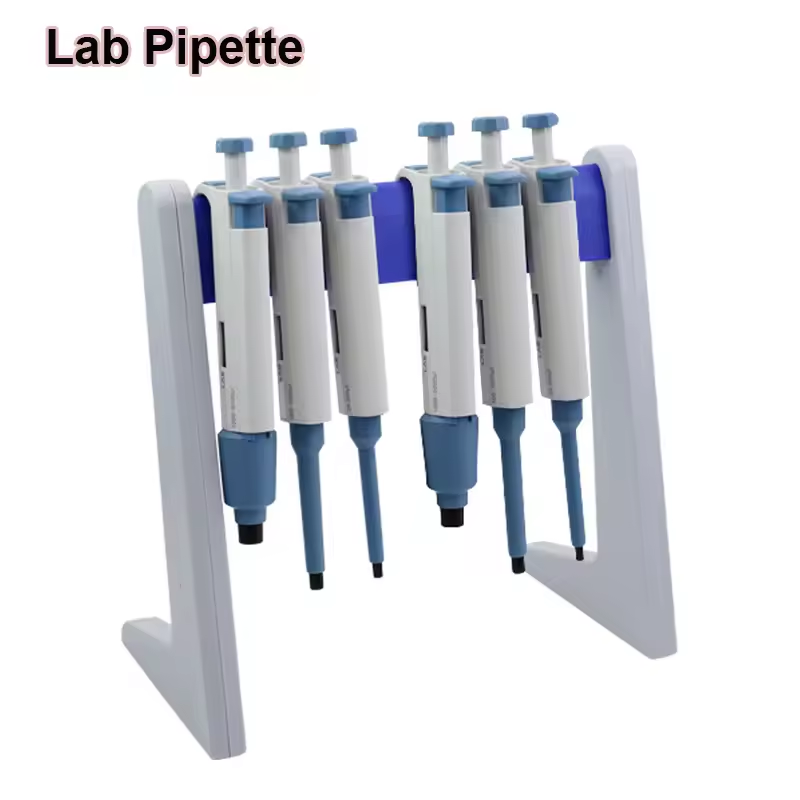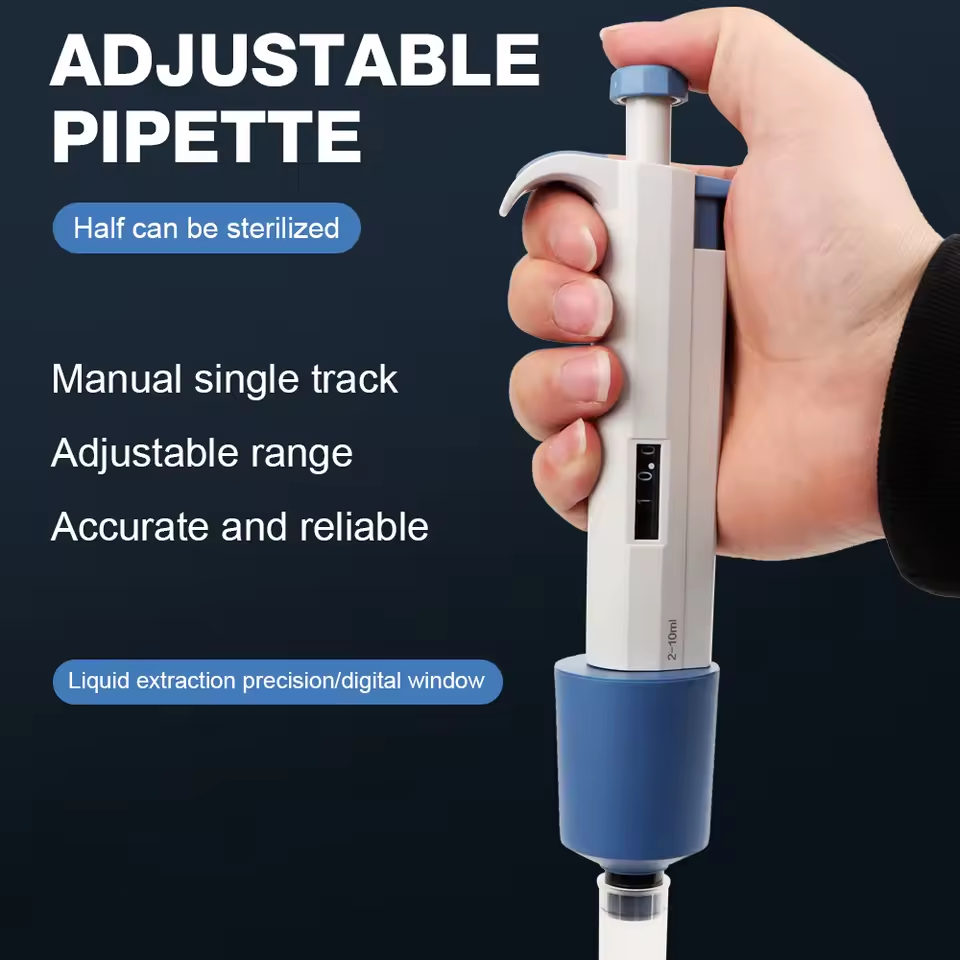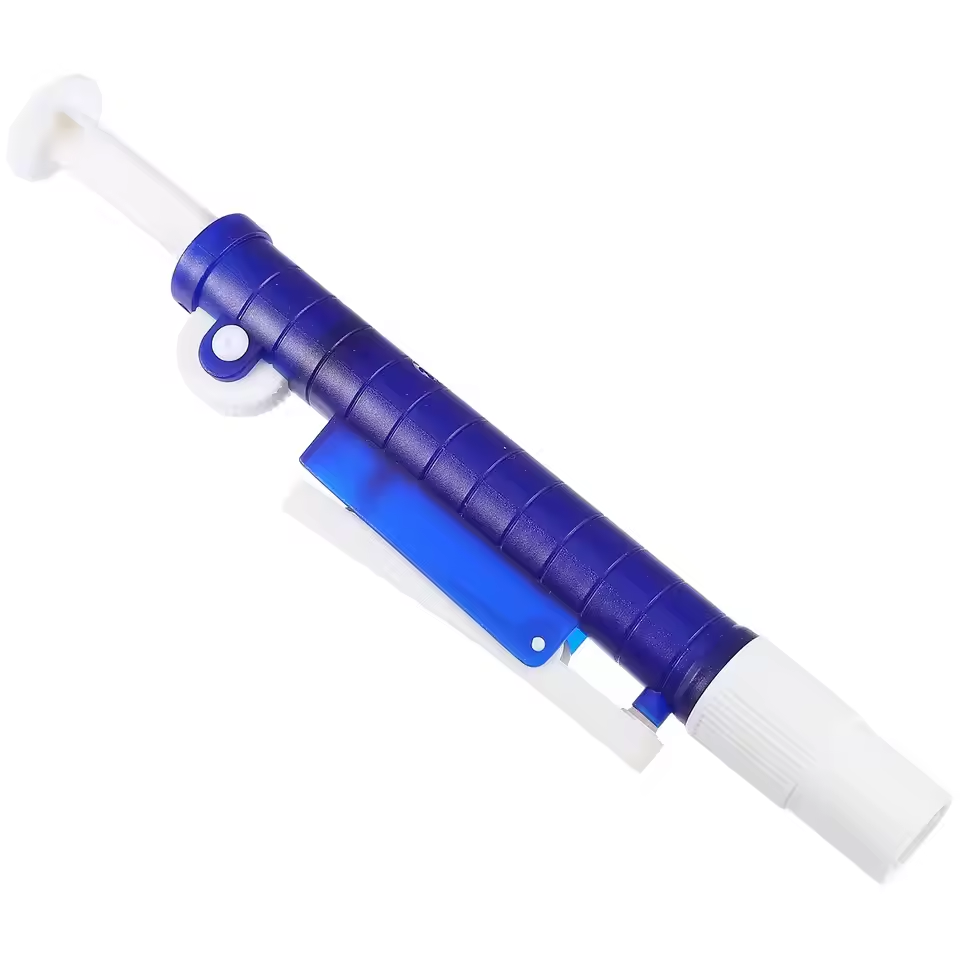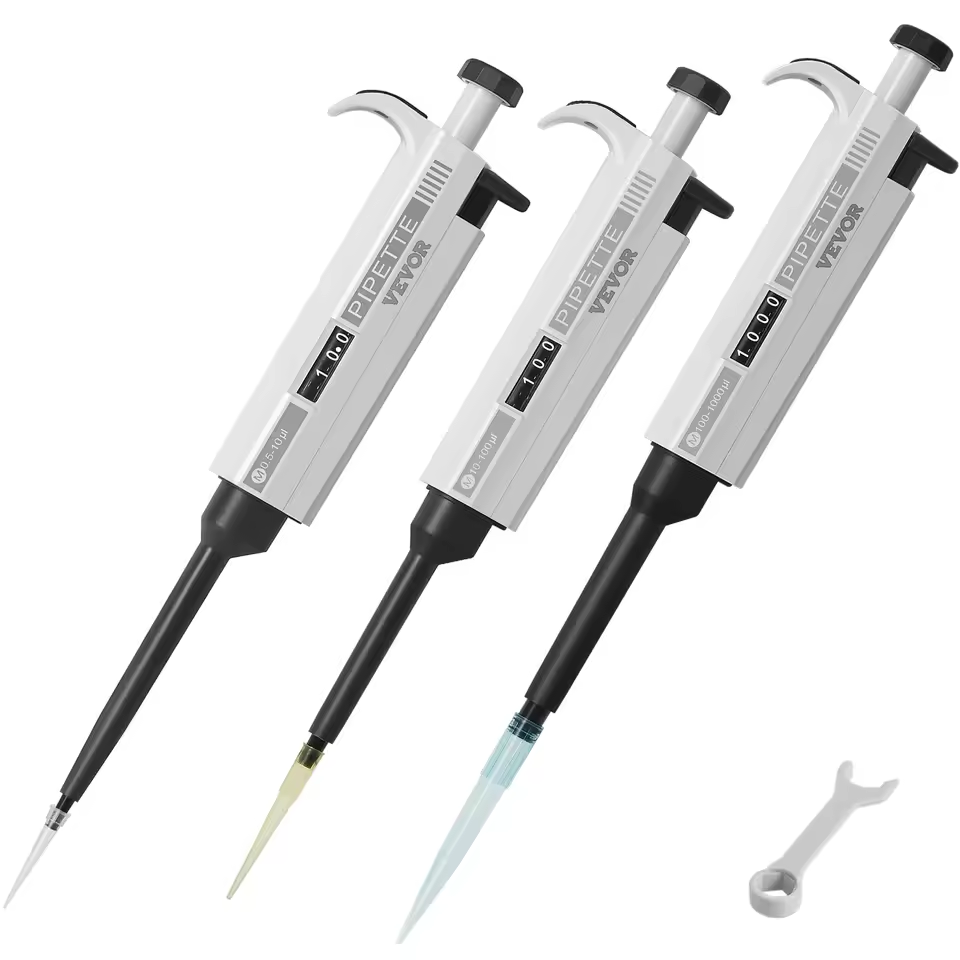Introduction to Robotic Pipettors
Robotic pipettor is changing how laboratories work with liquids. These devices offer precise control, speed, and consistency. By automating repetitive tasks, they solve common inefficiencies and improve results. They’re widely used in scientific research, healthcare, and other industries requiring liquid handling.

What is a Robotic Pipettor?
A robotic pipettor is a machine designed for liquid handling tasks. It automates the transfer of precise amounts of liquids between containers. These devices ensure accuracy and consistency, reducing human effort and errors. They are programmed via software to perform repetitive tasks quickly and efficiently. From mixing chemicals to preparing samples, robotic pipettors streamline many laboratory workflows.
History and Development of Robotic Pipettors
Robotic pipettors evolved with advancements in automation technology. Early pipettors were manual and required physical precision from users. Computerized systems later revolutionized accuracy, allowing programmable liquid transfers. Modern robotic pipettors now use advanced software for detailed control. Over the years, higher speed, reliability, and integration with other systems have been achieved. Today, they play a key role in laboratories worldwide, enhancing both research and diagnostics.
Key Features and Advantages of Robotic Pipettors
Robotic pipettors provide a range of benefits that enhance liquid handling in laboratories. These features optimize workflows, improve accuracy, and minimize errors during tasks. Below are the key advantages that make robotic pipettors integral to modern labs.
Precision and Accuracy in Liquid Handling
Robotic pipettors offer unmatched precision in transferring liquids. They guarantee accurate measurements every time. This level of control ensures reproducible results in experiments. Laboratories rely on this precision to maintain data integrity. Complex procedures, like serial dilutions, are executed flawlessly. With robotic pipettors, human variability is entirely eliminated. This benefits high-stakes fields such as diagnostics and pharmaceutical research.
Time Efficiency and High Throughput
Automation with robotic pipettors saves significant time in labs. Their rapid liquid handling capabilities process multiple samples in minutes. This high throughput is invaluable for large-scale studies or routine diagnostics. Manual pipetting takes hours, but robotic systems complete tasks much faster. Scientists can focus on analytical work instead of repetitive tasks. Time saved leads to increased productivity in research and testing environments.
Reduction in Human Error and Contamination
Human errors, such as mispipetting, are common in manual liquid handling. Robotic pipettors effectively eliminate such mistakes. Accurate programming ensures consistent performance every time. These systems also minimize contamination risks by streamlining workflows. Closed systems and controlled automation further reduce exposure to contaminants. This feature is especially crucial for sensitive experiments or clinical diagnostics.
Types of Robotic Pipettors
Robotic pipettors come in various types, each suited for specific tasks and workflows. Choosing the right type depends on lab requirements, such as sample volume and throughput.
Single-Channel Robotic Pipettors
Single-channel robotic pipettors handle one sample at a time. These devices are perfect for tasks needing detailed precision. They are ideal for low-throughput applications, like sample preparation or individual experiment setups. Their high accuracy ensures consistent results in small-scale tests. Many labs use single-channel pipettors for manual-style tasks but with greater speed and reliability.
Multi-Channel Robotic Pipettors
Multi-channel robotic pipettors process multiple samples at once. They are commonly used for high-throughput tasks. These devices make it easy to perform repetitive experiments like ELISA or plate-based assays. By transferring liquids across multiple wells simultaneously, they save time. Labs needing quick processing of many samples benefit most from this type. Multi-channel pipettors ensure rapid, precise liquid handling for larger-scale workflows.
Customized Automated Liquid Handling Systems
Customized automated systems are tailored to specific lab workflows. These setups combine flexibility and efficiency. Labs with unique requirements, like complex sample preparation, often choose these systems. They can handle a variety of tasks, from mixing reagents to advanced sample processing. Advanced software allows seamless programming for diverse needs. Customized systems support integration with other devices, maximizing productivity. Many labs rely on them for specialized applications in diagnostics, research, and development.
Applications of Robotic Pipettors
Robotic pipettors have a wide range of practical uses across various industries. They enhance efficiency, accuracy, and productivity. Below, we explore their role in key fields.
Research Laboratories and Academia
In research labs, robotic pipettors streamline complex tasks. Scientists use them to automate repetitive liquid handling. Applications include sample preparation, reagent mixing, and performing assays. Their precision ensures consistent results, crucial for reproducible experiments. Academic institutions use these tools for teaching and research purposes. They help students gain hands-on experience with advanced technologies. Robotic pipettors also save time, allowing researchers to focus on data analysis.
Clinical Diagnostics
In clinical settings, robotic pipettors play a critical role. They are pivotal in diagnostic tests like ELISA and PCR. These systems handle high-throughput tasks quickly and accurately. This speed is vital for processing numerous patient samples daily. Robotic pipettors reduce human errors and contamination risks. Their reliability ensures reliable diagnostic outcomes. Many hospitals and diagnostic labs rely on them for efficiency and precise liquid handling.
Pharmaceutical and Biotech Industries
In the pharmaceutical sector, robotic pipettors support drug discovery and development. They assist in high-throughput screening for potential drug candidates. These devices handle small volumes of costly samples with utmost accuracy. In biotech industries, robotic pipettors are used for protein analysis and genetic testing. Laboratories benefit from their ability to run multiple assays simultaneously. This boosts productivity while maintaining high-quality data integrity.
Environmental and Food Testing
Robotic pipettors are essential in environmental and food testing laboratories. They aid in analyzing contaminants in water, soil, and food products. Automated pipetting ensures precise sample handling during chemical and microbial tests. These systems also meet regulatory requirements by delivering accurate and repeatable results. Environmental monitoring and food safety labs rely on robotic pipettors to manage high-volume testing demands effectively.
How to Choose the Right Robotic Pipettor
Selecting the right robotic pipettor is important for optimizing laboratory workflows. Consider key factors and compare available options to make the best choice for your needs.
Key Factors to Consider: Volume Range, Automation Needs, and Software Compatibility
- Volume Range: Check the pipettor’s capacity to handle required liquid volumes. Labs working with micro-samples need pipettors capable of precise small-volume transfers. Larger operations may require devices with broader volume ranges for greater versatility.
- Automation Needs: Assess the level of automation your lab requires. Basic tasks may only need single-channel pipettors, while complex workflows benefit from multi-channel or customized systems. High-throughput labs demand fully automated devices to maximize efficiency.
- Software Compatibility: Ensure the robotic pipettor integrates well with existing lab equipment and software. Compatibility simplifies programming and workflow synchronization. Advanced systems offer user-friendly interfaces and flexible programming for diverse tasks.
Comparing Popular Brands and Models
- Brand Reliability: Popular brands like Hamilton, Tecan, and Thermo Fisher provide highly trusted devices. Check user reviews and industry ratings to ensure reliability and durability.
- Model Features: Compare specific features such as pipetting speed, accuracy, and ease of maintenance. For high-precision tasks, opt for models with enhanced performance metrics.
- Cost-effectiveness: Evaluate initial costs, ongoing maintenance requirements, and warranty options. Affordable models with long-term reliability offer value for money.
- Customization Options: Explore whether models support tailored configurations for unique applications. Research labs often benefit from flexible systems that adapt to specific workflows.
- Technical Support: Look for brands offering robust customer service and training options. Reliable technical support ensures minimal downtime and maximized productivity.
Considering these factors will help you choose a robotic pipettor that enhances lab efficiency and meets your specific needs.
Maintenance and Calibration of Robotic Pipettors
Proper maintenance and calibration are essential for robotic pipettors. These practices ensure accuracy, longevity, and reliable performance. Routine upkeep reduces wear and minimizes unexpected downtime in busy lab environments.
Regular Cleaning and Maintenance Tips
- Daily Cleaning: Wipe the pipettor’s exterior with a lint-free cloth after daily use. Remove dust and spills.
- Inspect Components: Check for visible signs of wear, damage, or malfunction. Replace faulty parts promptly.
- Clean Pipetting Mechanisms: Regularly clean channels, tips, and seals. Use recommended cleaning solutions to prevent clogs.
- Avoid Harsh Chemicals: Use gentle cleaners compatible with the device’s materials. Some chemicals may cause corrosion.
- Lubricate Moving Parts: Apply manufacturer-approved lubricants to ensure smooth operation of mechanical components.
- Follow Manufacturer Guidelines: Adhere to maintenance schedules outlined in the user manual for optimal care.
The Importance of Calibration for Consistent Performance
- Accuracy Assurance: Calibration keeps liquid handling precise. It prevents errors in volume measurement.
- Regular Calibration: Perform calibration at intervals recommended by the manufacturer or based on usage frequency.
- Use Calibration Standards: Utilize certified volume standards to validate results during the process.
- Professional Services: Employ qualified technicians for in-depth calibration procedures. This ensures high accuracy.
- Document Calibration: Record each calibration session. Save reports for compliance and quality control.
- Preventive Maintenance: Combine calibration with preventive care. Both processes maintain optimal device performance.
Both cleaning and calibration are vital tasks for keeping robotic pipettors efficient and accurate. Consistent application of these practices helps labs avoid errors and improve productivity.
The Future of Robotic Pipettors
Robotic pipettors are advancing rapidly, transforming laboratories and scientific workflows. Innovations are driving efficiency, accuracy, and precision. Let’s explore future trends and how robotics integrate with cutting-edge technologies.
Emerging Trends and Innovations
- Smaller, Portable Designs: Compact robotic pipettors are emerging for small labs or mobile setups. These designs enhance accessibility.
- Higher Precision Sensors: Advanced sensors are improving liquid transfer accuracy, meeting stricter experimental demands.
- Faster Processing Speeds: New designs feature higher throughput capacities for large-scale testing and diagnostics.
- User-Friendly Interfaces: Manufacturers are enhancing software interfaces, making programming simpler and intuitive for users.
- Enhanced Material Compatibility: Modern pipettors handle a broader range of liquids, including complex or reactive chemicals.
- Eco-friendly Models: Innovations in energy-efficient designs reduce consumption and environmental impact in labs.
Integration with Artificial Intelligence and Data Analytics
- AI-driven Pipetting: Artificial intelligence enables dynamic adjustments during liquid handling, improving accuracy.
- Predictive Maintenance: AI helps predict wear and the need for calibration, reducing downtime.
- Automated Workflow Optimizations: Smart algorithms analyze tasks and optimize robotic pipettor operations for maximum productivity.
- Data Analytics for Quality Control: Integration with analytics tools ensures precise record-keeping and real-time performance monitoring.
- Cloud Connectivity: Connected systems store pipetting data in cloud platforms for remote access and collaboration.
- Machine Learning Enhancements: Machine learning aids in improving pipettor performance over time based on historical data.
The future combines robotics, AI, and data to revolutionize laboratory processes. These advancements will elevate possibilities in science and industry.
Conclusion
The Role of Robotic Pipettors in Shaping Modern Science
Robotic pipettors have revolutionized liquid handling in laboratories across industries. They bring unmatched precision, speed, and reliability to scientific processes. By automating repetitive tasks, these devices save time and enhance productivity.
Their applications span research, diagnostics, pharmaceuticals, and environmental testing. Researchers depend on their accuracy for reproducible results and confident data analysis. In clinical diagnostics, they ensure precise handling of patient samples and expedite test results.
In the pharmaceutical and biotech industries, robotic pipettors accelerate drug discovery and genetic testing outcomes. Environmental and food testing facilities trust their precision for adherence to safety standards. These contributions highlight their importance in solving real-world challenges.
Future innovations promise even greater advancements. Smaller, eco-friendly designs will make them accessible to diverse labs. Integration with artificial intelligence will improve system efficiency and enable predictive maintenance. Enhanced compatibility with data analytics tools will refine their role in quality control.
In shaping modern science, robotic pipettors are indispensable tools for advancement. They empower labs to achieve breakthroughs and tackle complex challenges with confidence.